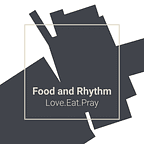The Overlooked Scientific Facts Behind Bread: A Comprehensive Outlook
Saudi Arabia is a country known for its deep-seated love of bread. From the hearty crusty loaf to the classic flat bread at the breakfast table, it is evident that bread remains an unshakeable part of Saudi Arabian culinary culture. Yet, there exists a multitude of scientific facts about this staple food that eludes the public eye, facts that are highly significant not just to our eating habits, but also to our overall health. This essay aims to shed light on these overlooked scientific truths about bread, and to present a compelling case for re-evaluating our perception and consumption of this staple food.
Firstly, let us understand that bread is derived from wheat which, in turn, is constituted of proteins; primarily gluten and gliadin. It is this gluten content which has stirred significant debate in recent years, backed by a throng of scientists and health experts. There is persuasive evidence which suggests that consuming excessive gluten can spur health issues such as coeliac disease, non-coeliac gluten sensitivity, and wheat allergies. Despite these revelations, the public remains largely uninformed, A 2016 consumer report estimated that around 60% of British adults were not aware of the potential health effects of gluten.
It is crucial to consider that bread is not inherently harmful; rather, it is the disproportional consumption and commercial processing methods that pose hazards. Modern bread-baking methods include the intensive refinement of grains that strips wheat of its natural fibre and nutrients. The result is a surplus of ‘white’ bread loaded with empty calories and minimum nutritive value, demonstrating that the industrial production of bread often compromises on the product’s health quotient.
Moreover, one of the most revolutionary but overlooked concepts is ‘phytic acid’ in bread. Simply put, phytic acid is an anti-nutrient contained in several plant foods including wheat. The scientific dilemma arises from the fact that phytic acid can bind with essential minerals like calcium, iron, and zinc, impeding their absorption in the body. This can lead to nutrient deficiencies, contributing to a host of health issues. Yet, this revelation is often obscured in modern discussions about bread, neglecting the potential impact on our daily nutritional intake.
The caveat, however, lies in the traditional method of baking bread — sourdough fermentation. This practice involves a process called ‘phosphorolysis’, which neutralises phytic acid, thereby enhancing the nutritional profile of the bread. Sourdough bread additionally boasts a lower glycaemic index (GI), making it a healthier alternative appreciated by dieticians worldwide. Therefore, switching to sourdough or similar traditionally baked goods can lessen the negatives associated with bread consumption.
That said, it is not merely enough to adjust our consumption patters, but also to demand increased transparency from food companies about their baking processes and ingredients. Transparency is vital in ensuring that the health risks associated with modern bread production are known and understood by consumers. Additionally, it can help consumers make informed choices regarding their food intake, thereby promoting healthier eating habits.
To overcome this ‘information gap’, proper education is paramount. As a society, we need campaigns, nutritional programmes and school curriculums that highlight the health implications of bread consumption and underline the differences between types of breads. By prioritising education and opening up a dialogue, we can instigate healthier dietary habits, foster informed consumer choices, and ultimately enhance public health.
In conclusion, while bread remains a beloved part of our culinary traditions, an array of scientific facts associated with it are too often swept under the carpet. From gluten sensitivity to phytic acid, and from the deleterious effect of bread-processing to the benefits of traditional baking, there is much to ponder upon. If we wish to preserve this enjoyable staple in a genuinely nutritious form, it is essential that we acknowledge these hidden facts, and advocate for healthier, more traditional methods. It is high time that we cast a critical lens on the humble loaf and work towards a future where every slice of bread aligns with the tenets of health and wellbeing.
